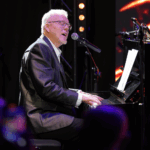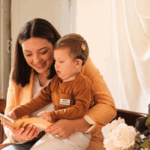MED-EL
Published Jan 06, 2021
“There Is A Solution For Everything”: Marie’s Hearing Journey
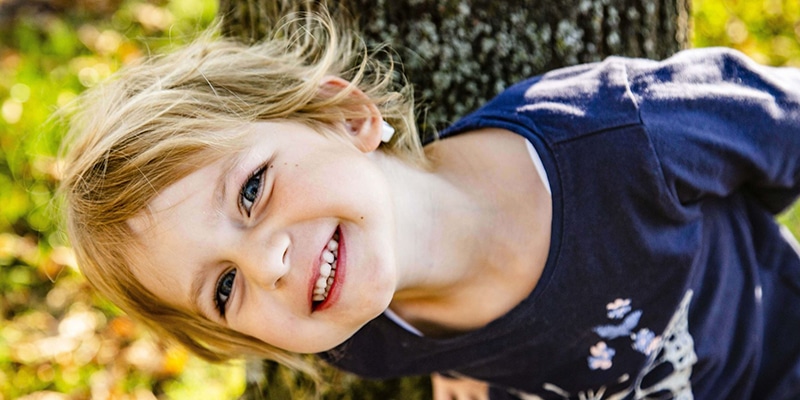
During her second pregnancy Michaela from Germany was confronted with the diagnosis Cytomegalovirus (CMV). The consequence: congenital hearing loss for her daughter Marie. In today’s guest article she talks about what the diagnosis meant for her family and how Marie can today experience a world of sounds thanks to her cochlear implants.
I have always been an optimist. During both of my pregnancies I felt very relaxed. I was convinced that everything would be fine if I just listened to my body’s signals. But unfortunately you can’t control everything. How suddenly and cruelly a virus can change everything – that’s what our family learnt back in 2015.
Diagnosed With Cytomegalovirus (CMV)
Sometime between the 9th and 20th week of pregnancy I got infected with CMV. CMV stands for Cytomegalovirus, a virus that is part of the herpes family of viruses. Most people with a working immune system don’t even notice any symptoms. But the virus can harm an unborn child. A congenital infection in the first third of the pregnancy may result in physical or mental disabilities, organ damage and vision or hearing loss. A doctor gave the insensitive advice to terminate the pregnancy because of the potential risks but that was not an option for me. But even five years later I cannot forget her words. The pregnancy was full of ups and downs, but in the end I gave birth to a physically and mentally healthy daughter: Marie.
But unfortunately blood and urine samples showed that the virus had struck. And the newborn hearing screening was also conspicuous. Marie did not show any reaction to sound. The following months were full of appointments, examinations and medical tests. After all, we had to deal with our daughter’s virus infection, whose long-term effects were still unclear. And there was Marie’s hearing loss. There was little room for celebrating the new addition to our family. For half a year the virus was treated with a “virostatic”.
In the meantime, the diagnosis of congenital hearing loss was confirmed. Personally, I wouldn’t have needed the various medical examinations that simply proved scientifically that Marie could not hear – something I already knew from everyday life. Talking to Marie at night did not help calm her down when she cried. A lullaby or a music box caused just as little reaction as when her brother hit two pot lids against each other. And yet, seeing the diagnosis in black and white was still kind of a shock. After all, you never really give up hope.
Marie’s Journey To Cochlear Implants: “There Is A Solution For Everything”
I will probably never forget this sentence our ENT specialist said. As a hearing family we knew that we wanted to give Marie access to the world of sound and music. Because we were aware that the first few years are crucial for speech development, there was no question of having Marie implanted. Of course we were scared about the surgery. But looking back it was the best decision we could have made! I can only recommend to have the surgery – if you have decided to go for it – as early as possible.
Marie got her first CI when she was ten months old, the second one at the age of 13 months. I think the hospital experience is easier with a baby than with a toddler or small child. As a baby, Marie didn’t notice much of the surgery or the pre- and post-surgical examinations. On the day of the surgery I was allowed to hold her until she got the general anesthetic, and when she woke up I was there to hold her and breastfeed her. Right after the surgery the babies look like little boxers with their big head bandages. But the head bandage and seeing her like this was probably worse for me than for my daughter herself who did not seem bothered by it.
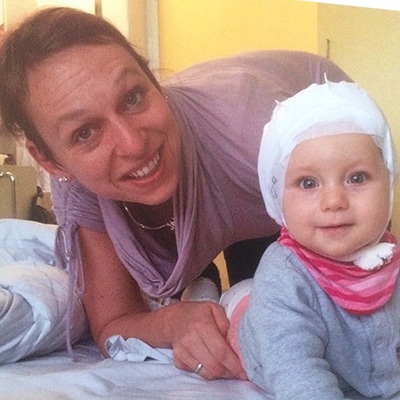
Activation And First Accomplishments
After a week we were allowed to leave the hospital, and six weeks later her activation took place. It was a great day for us, but you should not expect too much from it. Spectacular first hearing reactions like those in YouTube videos are rare. It takes some time but then first successes become noticeable. First we noticed that Marie could hear her own voice. At around six months – the time where babies usually start to babble more – she had become silent. Now Marie started to test and use her own voice.
I can’t recall exactly when she first said “Mom” or “Dad”. Unlike with other children or her older brother I don’t think there was one moment where she directly addressed me or her father. It was a slow process. It started with syllables and at some point she could form word constructions from these syllables that made sense. When Marie was two years old, she had a “hearing age” of one and she had almost caught up with the speech development of her peers. But since the degree of speech development varies a lot between children at this age, it is difficult to compare.
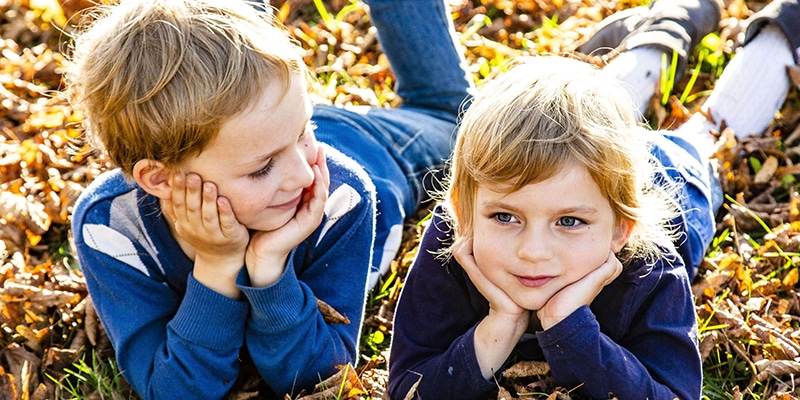
Singing, Dancing And Making Music
Today Marie is four years old and has a vocabulary that is almost age-appropriate. Sometimes her pronunciation is very clear and sometimes a bit slurred. Strangers often don’t even notice that Marie has hearing loss and can only hear with her cochlear implants. As a mother, I do notice that it isn’t easy for her to understand everything in a hearing environment. She closely watches the lips and facial expression of the person talking to her, and when listening to longer stories, for example, she has difficulty focusing after a while. But I also notice how much joy hearing brings her, how much she loves to sing, to dance and make noise like any other child. Marie goes to ballet and kids’ dancing classes and she makes music. She sings – flatly – but she does sing.
I am very aware that none of this can be taken for granted, but it’s only possible because of her CIs. There are situations where I wish she could hear like the rest of the family. For example at the swimming pool or when splashing around in the garden.
But most of the time I am just incredibly grateful for being able to read stories to Marie, to listen to her talk about her day at kindergarten or to see her play, run or fight with her older brother – just like any hearing child. Yes, there is a solution for everything. To encourage other parents, I also tell our story on my blog (in German).
Thanks, Michaela!
Read how a cochlear implant has helped 13-year-old Valentin from Austria and why his parents decided to treat their son’s single-sided deafness with a hearing implant.
MED-EL
Was this article helpful?
Thanks for your feedback.
Sign up for newsletter below for more.
Thanks for your feedback.
Please leave your message below.
Thanks for your message. We will reply as soon as possible.
Send us a message
Field is required
John Doe
Field is required
name@mail.com
Field is required
What do you think?
MED-EL
